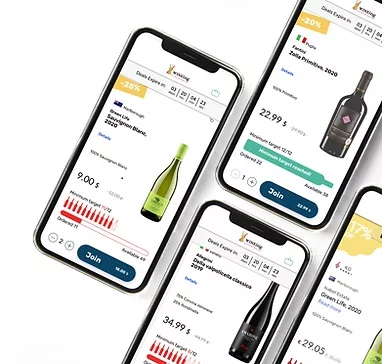
Paul Giamatti and Thomas Haden Church put pinot on the map in 'Sideways.'
By Adam Lee
This month, Oct. 22 to be exact, marks the 20th anniversary of the commercial release of what is arguably the most famous wine-related movie of all time: Sideways. The movie actually made its premier the month prior at the 2004 Toronto International Film Festival, but largely went unnoticed. Movie critic Roger Ebert even failed to mention it in his review of the 2004 TIFF. Hotel Rwanda captured the People’s Choice Award as the best film of the festival, while Omagh won the Discovery Award. In other words, there was little to indicate the future commercial success of the film, much less the huge impact it would have on the tangentially related wine industry.
Conventional wisdom says that Sideways killed merlot and anointed pinot noir as the prince of red grapes in California. In fact, the overall effect on merlot seemed to be rather minimal. In a study for Sonoma State’s Department of Economics Seminar Summit, Dr. Steven Cuellar showed that merlot’s sales were only slightly affected and that was primarily at the lower end of the price spectrum. On the other hand, pinot noir sales bumped up significantly following the movie across all price points, especially in the higher-dollar ranges. For those of us that were making pinot noir, Sideways seems like a remarkable gift—and opportunity to sell all of the wine we made in the blink of an eye.
In fact, pinot noir had been on a bit of a rollercoaster for just shy of a decade when Sideways was released. Looking at the California Grape Acreage report, new plantings of pinot noir took a huge jump in 1996. In Monterey County in 1995, 35 acres of new pinot noir were planted, but in 1996 that number was 166 acres. Similar jumps were seen in Santa Barbara County (7 acres to 101 acres) and Sonoma County (147 acres to 569 acres). There were several factors that contributed to this surge in pinot’s popularity, including the new availability of Dijon clones 113, 114 and 115, and the press that accompanied the outstanding 1994 vintage (both Robert Parker and Wine Spectator hailed it as a great vintage—with Wine Spectator proclaiming, “The 1994 vintage may well be the breakthrough year pinot noir lovers have been waiting for”). But, as is often the case, the growers were ahead of the public. After the mid-1990s surge, plantings slowed and, in fact, dropped back to 1995 levels. And then, in October of 2004, along came Sideways. Once again plantings surged, and pinot noir became enthroned as the “prince” of California’s red grapes with sales exceeding plantings and pushing more and more vines into the ground.
While these figures provide the skeleton of what happened, they don’t truly tell the story of pinot noir and Sideways. I founded Siduri Wines in 1994—the year that helped spur that first boon in pinot noir plantings. By the time Sideways came along, I was sourcing pinot noir from the far northern Willamette Valley to the Santa Rita Hills in Santa Barbara County. I was far from the only vintner to jump on the pinot noir train. In fact, a group of us had formed something of a Pinot Noir Support Group. We’d travel the country as a group, promoting pinot noir. It was a loose camaraderie of colleagues and friends, who shared everything from vineyards to winemaking tips to marketing events. I recall one particular dinner at Prima Restaurant in Walnut Creek, where six of us were slated to pour our pinots noir for a full house of patrons. Before the event, we decided to do something “crazy.” Since we all knew each other and each other’s wines so well, we decided to present a wine that wasn’t our own. I spent the entire night talking about a pinot noir made by Brian Loring while someone else presented my Siduri Pinot Noir.
For a short time, Sideways brought this group even closer together. I remember waking up one morning on a pinot group sales trip to Arizona to a deluge of messages from the East Coast on my cell phone. The Today show had run a feature on Sideways and wine and they’d run across the street to Morrell & Company and picked up a few bottles to feature during the segment. One of those wines was Siduri. We all celebrated that night—with lots of wine (and lots of sales).
Ultimately, I am skeptical of Sideways’ positive influence on pinot noir. Sideways gave each of us enough popularity that we were no longer the outsiders, fighting together for pinot noir. But after Sideways, I could host my own Siduri dinner and no longer needed my group of friends to fill a room. You could say that we grew apart, but we really didn’t. I can still call Brian or James or Dan and we can chat about the fun of the old days and the challenges of the new days. But it is more difficult now to get a group to host an event together. Just the other day I heard from a larger pinot noir winery that they don’t do cross-promotional events with other producers.
There’s a sadness in this for me. After Sideways, pinot noir became too big not to become a business. Maybe it’s called “growing up” rather than growing apart and maybe it is inevitable. But I don’t have to like it. There’s a bond formed when a group is collectively fighting against windmills. Maybe the time will come that we start to see neo-prohibitionism and the market challenges we all face as the giants we are collectively fighting against and once again join together on epic quest to bring pinot noir—anybody’s pinot noir—to the tables of American families. I know I am ready to ride.
Adam Lee co-founded Siduri Wines in 1994, selling it to Jackson Family Winery in 2015. He now produces and owns Clarice Wine Company, and consults with numerous different wineries, including Rombauer Vineyards on their Pinot Noir project.



